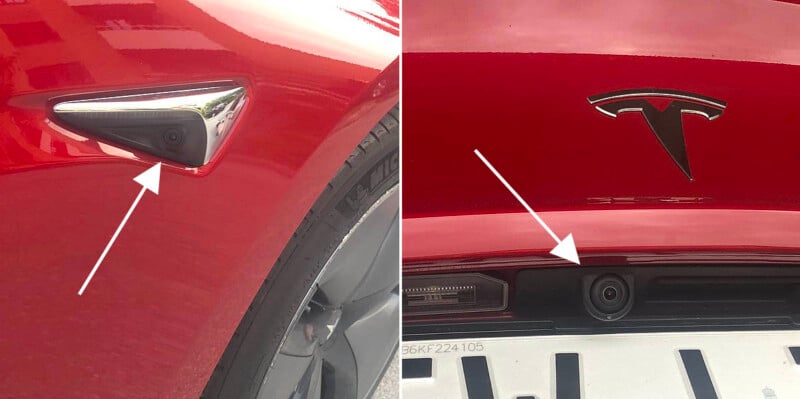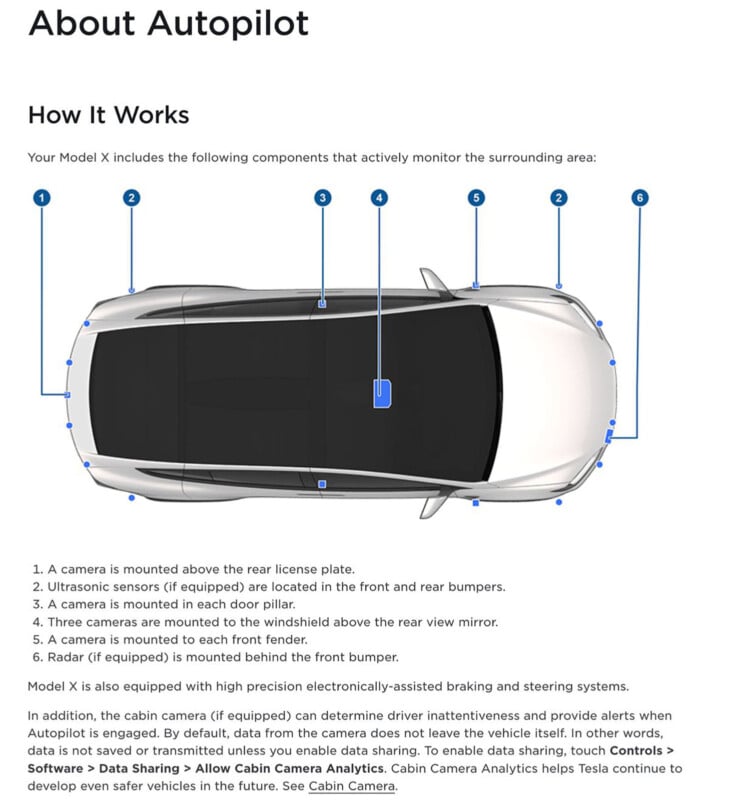Tesla Staff Shared Sensitive Images Captured by Customers’ Cars: Report
![]()
A new report claims that between 2019 and 2022, Tesla employees privately shared images and videos captured by the cameras built into Tesla’s popular electric vehicles using an internal messaging system.
Troubling Report Outlines Pattern of Invasive Behavior within Tesla
After speaking with nine former Tesla employees, Reuters reports that some of the recordings shared among employees captured customers in embarrassing situations. An ex-Tesla employee described a video of a naked man approaching his Tesla.
Beyond major invasions of privacy, employees also viewed and shared footage of crashes and road-rage incidents. A former employee told Reuters that in 2021, a video of an accident involving a speeding driver hitting a child on a bicycle spread “like wildfire” through Tesla’s office in San Mateo, California.
Other images were much less embarrassing and violent but no less invasive. Employees turned customers’ images of funny signs and animals into memes with captions and commentary.
Some images were only shared in one-on-one chats, while others were reportedly seen by “scores” of employees.
Despite Tesla’s Claims of Anonymity, Images Shared Internally Could Identify Owners
In its “Customer Privacy Notice,” Tesla claims that its “camera recordings remain anonymous and are not linked to you or your vehicle.” However, seven former Tesla employees told Reuters that Tesla’s internal computer program can display location data, which could easily be used to identify its customers.

Disturbingly, some of the recordings shared among Tesla employees appear to have been made while the Tesla automobile was parked and turned off. Tesla has since stopped receiving video recordings from its vehicles when powered off, but several years ago, owners could consent to send this data to Tesla.
When consenting, it’s hard to imagine that Tesla owners had any idea that photos and videos from their cars would be distributed among Tesla employees for entertainment.
“We could see inside people’s garages and their private properties. Let’s say that a Tesla customer had something in their garage that was distinctive, you know, people would post those kinds of things,” a former employee tells Reuters.
Tesla CEO Elon Musk isn’t immune to the invasion of privacy. Some employees saw and shared an image of a unique submersible Lotus Espirit from the 1977 James Bond movie, “The Spy Who Loved Me.” Musk purchased the car from auction for nearly $1 million in 2013.
Neither Tesla nor Musk responded to Reuters’ request for comment. Reuters has also been unable to obtain any of the videos or images described by ex-Tesla employees.
It also remains unclear whether this practice continues within Tesla to this day or how widespread the practice of sharing recordings is. Some former employees claim that they only ever saw shared images that were relevant to legitimate work.
Why Does Tesla Even Need Customer’s Images?
There are plenty of good reasons for Tesla employees to see images recorded by its cars. For example, the artificial intelligence systems within Tesla’s cars must be partly trained by employees. The AI must be fed authentic images, which people must adequately process.
Since 2016, Tesla has employed hundreds of people, first in Africa and then the United States, to label images to train its cars how to recognize important objects, like pedestrians, signs, construction vehicles, garage doors, and anything else that a Tesla car might encounter in the real world.
To that end, the employees tasked with data labeling and image processing were provided access to “thousands of videos or images” recorded by Tesla car cameras.
Over time, Tesla automized this process as much as possible and shut down a data labeling operation in San Mateo last year. However, the company continues to employ “hundreds” of data labelers in Buffalo, New York. The staff in New York has continued to grow, now nearing almost 700 employees.
Employee Blames Customers for Expecting Privacy
Within Tesla, there’s no consensus that sharing customer images is wrong. Two ex-employees told Reuters they weren’t bothered by the practice, suggesting that customers should have known what would happen if they gave consent for Tesla to have its data and that people shouldn’t have any expectation of privacy anymore.

Other ex-employees weren’t so quick to blame Tesla’s customers, instead putting the onus on the company and its employees.
“It was a breach of privacy, to be honest. And I always joked that I would never buy a Tesla after seeing how they treated some of these people,” one former employee tells Reuters.
Another employee expressed concern. “I’m bothered by it because the people who buy the car, I don’t think they know that their privacy is not respected…We could see them doing laundry and really intimate things. We could see their kids.”
Reported Behavior Described by Cybersecurity and Privacy Expert as “Morally Reprehensible”
“Any normal human being would be appalled by this,” said David Choffnes, executive director of the Cybersecurity and Privacy Institute at Northeastern University in Boston, Massachusetts. Choffnes called the behavior Reuters reports “morally reprehensible.”
While Tesla’s Customer Privacy Notice explains that customers agree to share data, and although there are plenty of good reasons for that data to be used internally, that’s a far cry from the reported behavior.
Carlo Piltz, a data privacy lawyer in Germany can’t see a legal justification under Europe’s data protection and privacy laws for what Tesla employees have allegedly been doing. The practices have “nothing to do with the provision of a safe or secure car or the functionality” of Tesla’s autonomous driving systems, Piltz says.
Sentry Mode Poses Separate Risk to Privacy
Some of Tesla’s features, including its “Sentry Mode,” go beyond recording owners and even record people who walk by a Tesla with the mode enabled. The drivers can then view recorded images themselves. A person could theoretically use their Tesla car to spy through someone’s window in a residential area, a concern raised by the Dutch Data Protection Authority (DPA) in a recent investigation of Tesla over possible privacy violations.
“People who walked by these vehicles were filmed without knowing it,” said DPA board member Katja Mur. “That is a serious violation of privacy.”
The watchdog determined that it was Tesla owners, rather than Tesla itself, who were responsible for the car’s recordings. Tesla changed Sentry Mode, including having a vehicle’s headlights pulse to alert passers-by that recording was in progress, thereby skirting potential fines from the DPA.
Sentry Mode aside, the behavior within Tesla described by Reuters and former employees paints a disturbing picture. Nothing in Tesla’s privacy notice suggests to customers that Tesla employees might share accidents — especially those involving significant harm or damage — or compromising images from within customer’s garages among themselves for a laugh.
Some Tesla Employees Feared Driving Tesla’s Cars Amid Privacy Concerns
Among data labelers at Tesla’s now-closed San Mateo office, workers could win a prize of being able to drive a company car for a couple of days, according to two former employees. “Knowing how much data those vehicles are capable of collecting definitely made folks nervous,” one ex-employee said.
If those in the know were concerned by not just the quantity of data collected by Tesla’s cameras but by how it was being abused within Tesla, it’s easy to wonder how customers might feel.